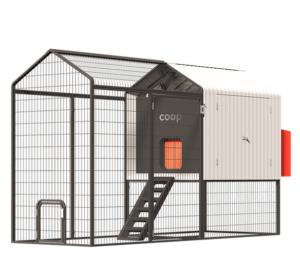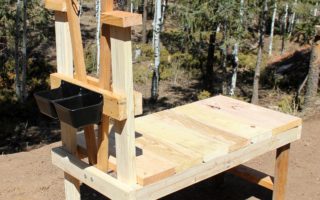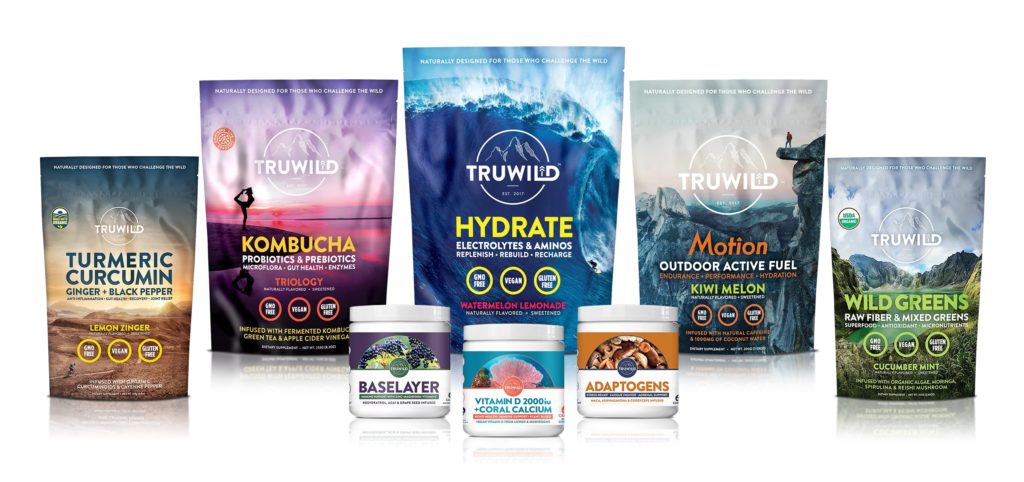Homemade chicken food can be cheap to make and is much healthier for your flock. This creates naturally nutritious orange yolks. Not those artificial orange yolks you get from store bought eggs where chickens are fed dyes to get that color. Even the organic feeds at the feed store are still just over cooked grains with vitamins added. Below is the recipe I use for my flock, and they love it! I recommend at least using the base recipe, but the more items you can use from the optional list the better. More variety equals more nutrient variety, and you can always make different batches each time. Sometimes I’ll run out of an ingredient, so I’ll try to replace it with another.
*FINALLY, A Smart Coop For Chickens (CLICK HERE)*
Basic Base Recipe Ingredients:
4 cups Whole Barley
4 cups Whole Oat Groats
4 cups Wheat
2 cups Field Peas
1 cup Organic Non-GMO Corn
1 cup Black Oil Sunflower Seeds (BOSS)
½ cup Whole Flax Seeds
1/8-1/4 cup Kelp Powder or Flakes (1-2% of food volume)
Optional Add-Ons For More Variety:
½ cup Chia Seeds
½ cup Sesame Seeds
½ cup Nutritional Yeast
1/2 cup Moringa Leaf Powder
1 cup Millet
1 cup Sorghum
Mealworms (as a treat)

What Each Ingredient Has To Offer
Whole Barley: Major source of fiber, selenium (prevents wry neck), B vitamins, copper, chromium, phosphorus, magnesium, niacin, antioxidants, and aid in cognitive function.
Whole Oat Groats: Rich in B vitamins, protein, calcium, and fiber
Field Peas: Highly digestible protein, amino acids.
Black Oil Sunflower Seeds (BOSS): High in protein, vitamins, minerals, healthy fats for shiny/healthy feathers.
Whole Flaxseeds: Omega 3’s, rich in protein, B vitamins, and minerals.
Kelp Powder or Flakes: Nutrient rich with very high levels of Vit K (necessary for bone health & blood clotting), rich in iron, iodine, B9 (folate), calcium. Vitamins A, B1, B6 (niacin), B12, D, E, pantothenic acid. Trace minerals like phosphorus, zinc, copper, manganese and selenium as well as lower levels of phenylalanine, leucine, lysine, histidine, and tyrosine. Acts as a prebiotic and gives you stronger egg shells with richer looking egg yolks.
Chia Seeds: Omega 3’s, protein, fiber, antioxidant, vitamins, minerals like calcium, manganese, magnesium, phosphorus, zinc, potassium, B vitamins B1 (thiamine), B2, B3 (niacin).
Sesame Seeds: Protein, calcium, copper, magnesium, iron, zinc, vit E, polyunsaturated fats, B vitamins like B1 (thiamin), B3 (niacin), folic acid, pyridoxine, and riboflavin.
Nutritional Yeast: Protein, antioxidants, over 14 important minerals, phosphorus, all B Vitamins, chromium, 16 amino acids, 17 vitamins (not including vitamins A, C and E).
Whole Wheat: Fiber, protein, calcium, iron, magnesium, phosphorus, zinc, copper, manganese, selenium, thiamine, riboflavin, niacin, folate, choline, vitamins B6, K, and E.
Millet: Full of amino acids and iron, provides magnesium, calcium, manganese, tryptophan, phosphorus, potassium, fiber, vitamin B, and antioxidants. Quercetin, curcumin, and ellagic acid supports toxin removal by promoting proper excretion and neutralizing enzymatic activity in organs.
Sorghum: Can replace corn up to 45%, rich in micronutrients, high levels of unsaturated fats, fiber, protein, phosphorus, potassium, calcium, iron.
Whole Organic/Non-GMO/Corn: Good for winter, fats keep them warm and provide energy, vitamin B12, folic acid, iron, folate, magnesium, and thiamine.
Moringa Leaf Powder: Nutritional powerhouse of vitamins, minerals, amino acids. Moringa can be a healthy addition to your flocks feed.
Mealworms: Good source of protein a little goes a long way and they should only be fed as a treat.
*For Busy Chewers Try Natural Dog Chews By RedBarn (CLICK HERE)*

Where To Buy?
I have been using “Azure Standard” for the majority of my chicken feed ingredients. I have found them to be the best source for buying bulk organic items for less.
You can learn more about Azure Standard in my blog post . . . Azure Standard: Bulk Organic Food
How To Stretch Your Dollar Even More
For the following methods are highly recommended to increase the nutrient content of the feed. You’ll want to have just the whole grains and seeds as the powders can get ruined or flushed out during the process. You can add stuff like the kelp just prior to feeding your birds.

Soak: I use this method when I’m short on time and don’t have any of the other methods ready to go. Soaking your chicken feed adds water content to help keep your birds hydrated. The soaked grains swell up in size which helps fill your birds up quicker and makes it easier for them to break it down.

Fermenting: This process puts good bacteria into your chickens’ gut and is as simple as putting the feed in a container or jar, making sure it’s fully covered in water, and then let it sit for 2 days before feeding it to your chickens. Make sure the feed is not exposed to the air or it can cause molding. Give it a quick sniff before feeding it to your chickens, it should smell kind of like bread or beer. It should not smell rancid or moldy.
Sprouting: This is one of my favorite methods as it doesn’t take up a whole lot of space and it has an increased nutrient content. For this method you just want to fill jars up about halfway with seeds and soak them for 2-10 hours until the mix has swelled up. Don’t soak too long or you’ll drown your seeds. Next, drain the jars and just make sure to rinse them 2-3 times per day for 3-4 days. Your sprouts should be sprouted and ready to feed to your flock. If you start a new jar each day, then you can have a continual supply.

Fodder: This is much like the sprouting only you’ll want to pour the pre-soaked mix into a growing tray and rinse 2-3 times per day. Ideally you can make your own self watering system which will make it a more hands-free operation. You should be able to feed by day 7. Make sure the trays have enough air flow so that mold doesn’t form. Cooler temps will help too.
*Check out these QUIRKY FUN dog beds by FunnyFuzzy (CLICK HERE)*

Don’t Have Time To Make Your Own?
Sometimes life just gets busy, but you still want the best for your birds. My alternative feed of choice is Scratch & Peck, they offer organic/non-GMO products and essentially mix the feed for you with different formulas. I haven’t tried to sprout this, but I probably wouldn’t try as they have split peas, not whole peas, as well as other supplements that would get flushed away with trying to sprout. This can also be purchased at Azure Standard . . . .










Oh wow! I soaked overnight for each jar’s 1st day. Somehow I missed the “1-2 hours” and read it as”12 hours”! House temp is usually 65-72, and I may try rinsing 3x day instead of 2. I’ve just been feeding the mixture dry the last couple of weeks, and while they seem to love it, I’d like to stretch it further! Thanks for the tips!
How much of this mixture do you feed per chicken daily? I assume this is different than just throwing it into a hanging feeder and giving it to them free choice like you would a commercial feed? We have all ingredients on hand, and will be mixing it up asap, bit I have no idea how much or how to feed them? In a hanging feeder? In a large feed bowl? I’m considering the soaking method as well… I would think you’d have to give a certain amount daily as wet feed would get moldy pretty quickly if left out for too long. Thanks for any more details you can provide!
Best way to figure this out is to offer what you think they will eat each day. Keep adding more until you start noticing extras or waste. I used to free feed it dry until I realized they’d pick out what they wanted and leave what they didn’t want (generally the peas). It also started to attract rodents so I switched to a daily ration. Now I sprout it to stretch our dollar more. I just do a quart sized mason jar of sprouts (probably a cup dry) for 6 chickens, serving it in a metal bowl or hog pan. And then they also free range, and have store bought feed in their hanging feeder to supplement in case they are still hungry.
That’s a perfect starting point, thank you! We have 5 chickens, so I’ll try that amount and see how it goes! If it turns out well, I may start a new jar daily to sprout, so I have a fresh supply every day! I’m excited to get started!
I’m popping back in for some sprouting help!
I am currently on evening 5 (soaked on night one, then I’ve been rinsing and draining 2x day for the last 4 days), and I’m definitely getting some sprouts, but they’re pretty slow growing. My quart jar is barely half full. I was expecting long sprouts and roots by this point!
I put a cup of dry grain mixture in to begin with.
The sprouts smell like apple cider vinegar… is this how it is supposed to smell? I don’t see any mold, but I have no clue if I’m doing it right. The concept seemed so simple, yet I’m totally winging it lol. Any words or wisdom, oh ye sprout Master? 🙂
It should smell more like bread, I’ve noticed if I don’t clean the jars after each batch they get more of a vinegar/fermented like smell but it doesn’t sound like that’s your problem with just starting out. How long was the initial soak? All night? That can drown the seeds. You want to do the initial soak for only 1-2 hours. What temperature is your house? We are roughly 60-70°F. The colder it is the slower they will sprout, but even then they are usually ready to go by day 5. The warmer it is the more you need to keep an eye out for mold and may want to do a third rinse each day to prevent it. The only other thing I can think of is that the grain is old or bad and therefore is not germinating.
It should smell more like fresh grass. I’ve gotten that vinegar/fermented smell from not cleaning the jars after each batch but that shouldn’t be your problem with just starting out. How long was the initial soak? All night? That’ll drown your seeds. You only want to soak them for 1-2 hours. Personally, I’m usually so busy I don’t even soak them, I just jump right into rinsing twice per day. What temperature is your house? We’re about 60-70°F. Colder temperatures will slow the sprouting but they should still be ready by day 5. Warmer temperatures you’ll want to watch for mold and will want to rinse 3 times per day instead of 2. The only other thing I could think of is the grain is old or bad and not germinating properly. Hope that helps!